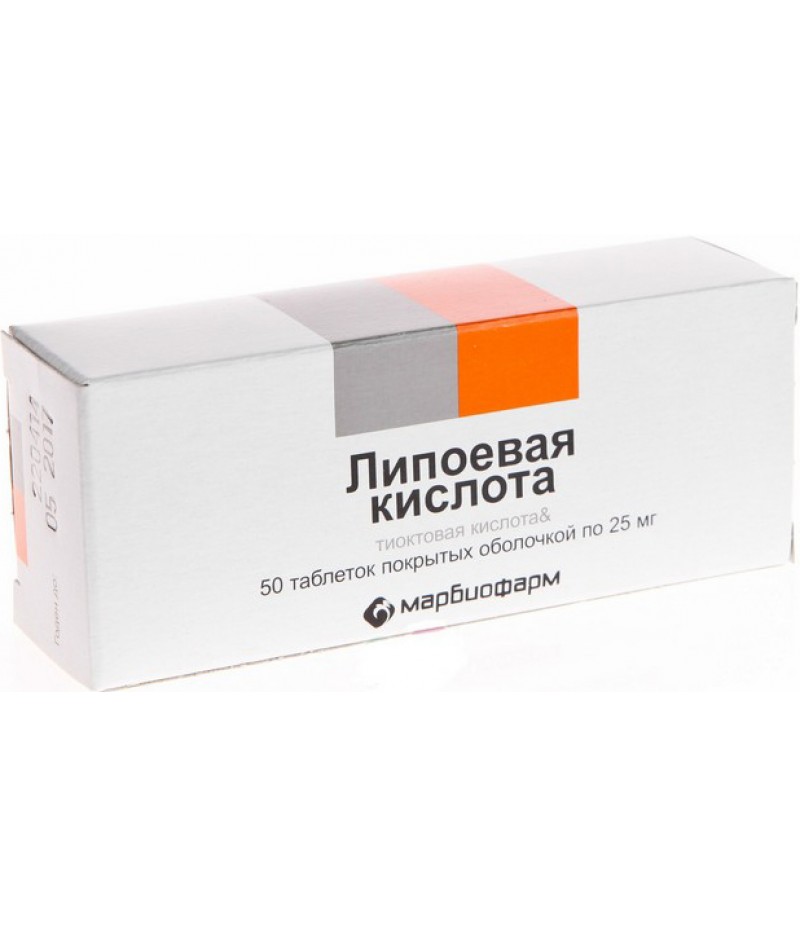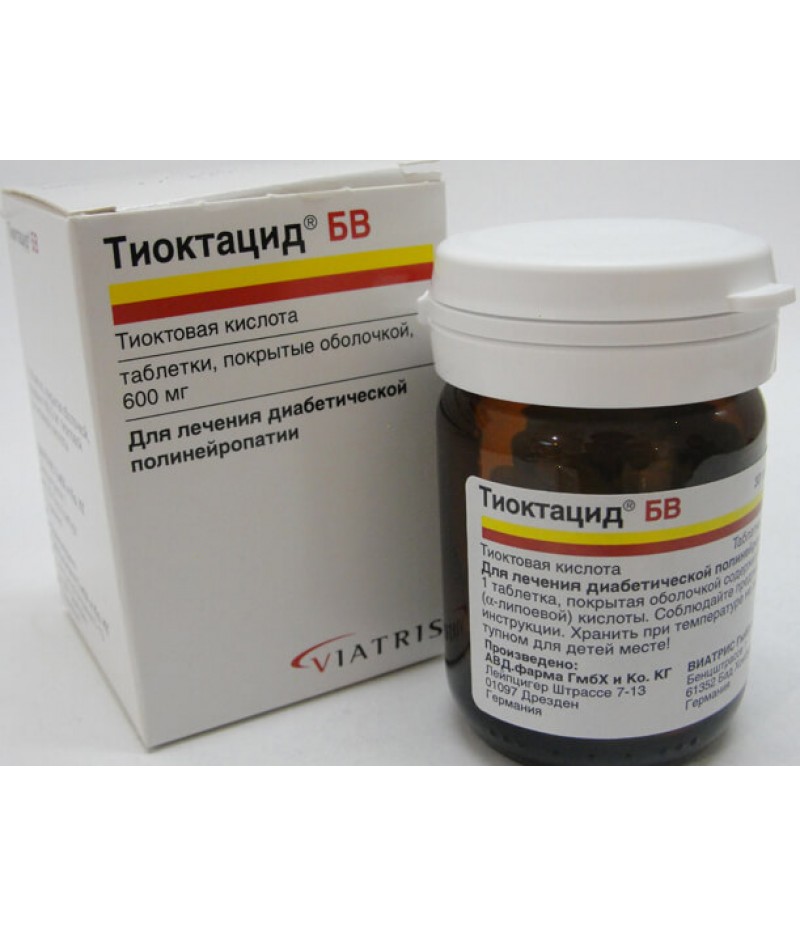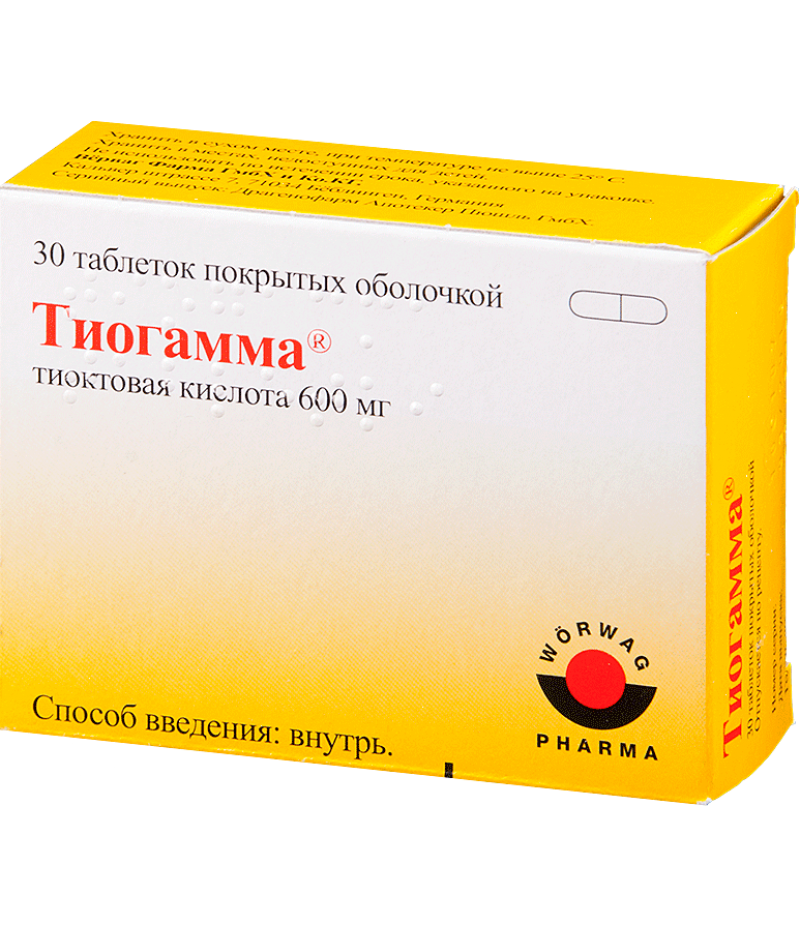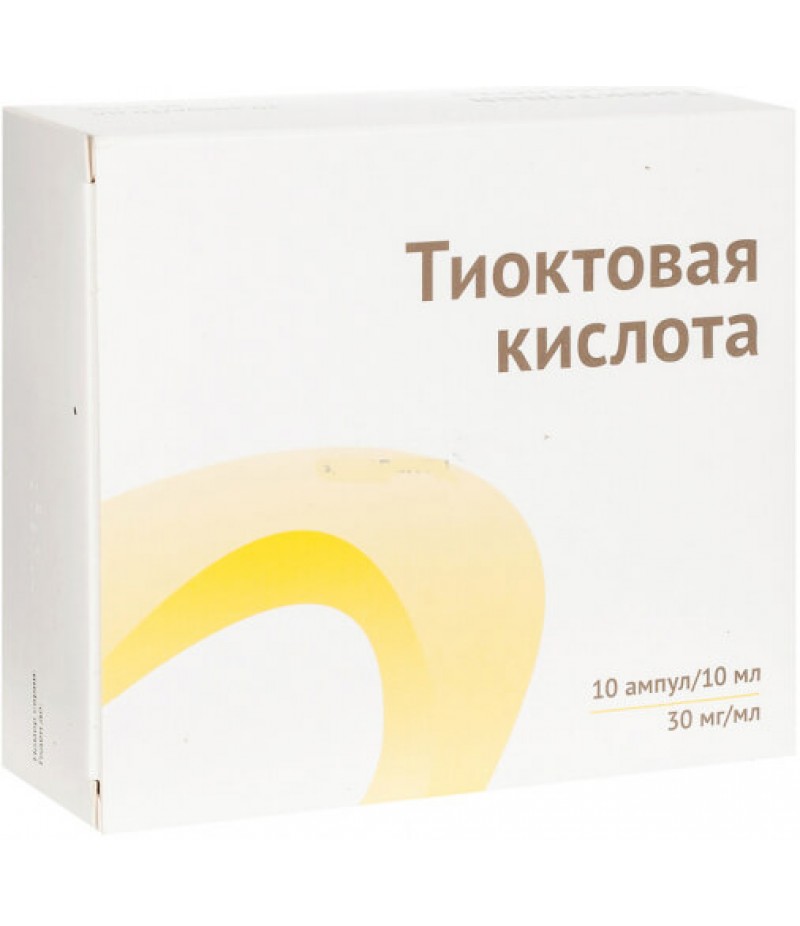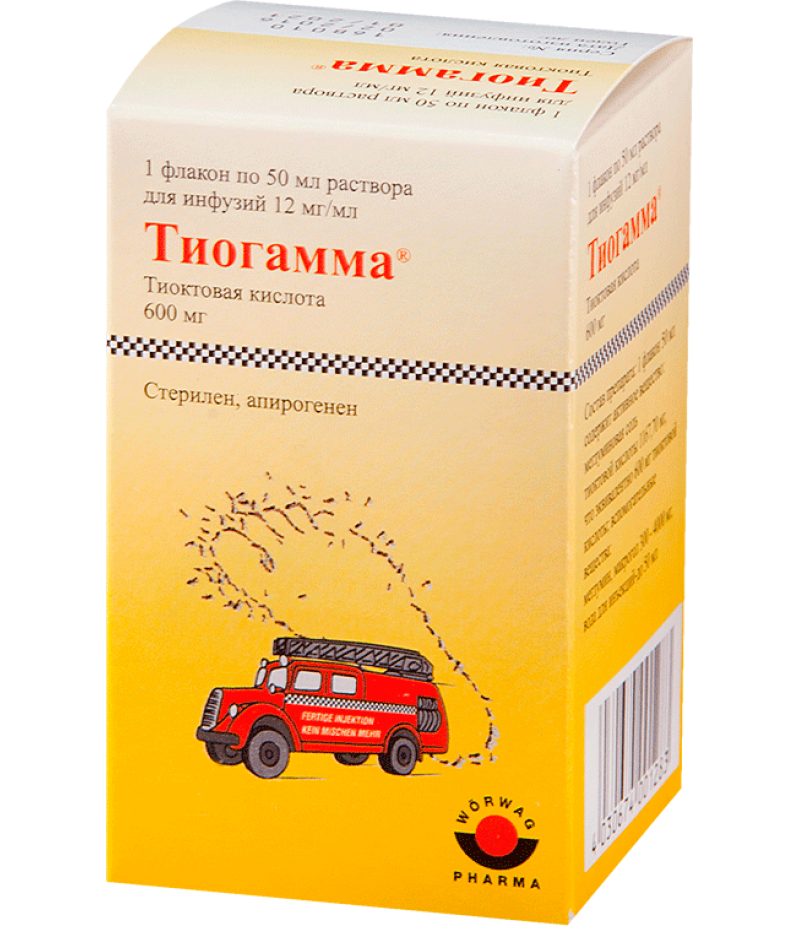Thioctacid 600 T solution 25mg/ml 24ml #5
- $51.20
- 2 or more $50.40
- 3 or more $49.25
- Availability:In Stock
Thioctacid 600 T instruction for useYou can buy Thioctacid 600 T hereComposition1 ampoule of solution contains:Active ingredient: trometamol thioctate - 925.2876, in terms of thioctic (a-lipoic) acid
Tags: solution
Thioctacid 600 T instruction for use
You can buy Thioctacid 600 T here
Composition
1 ampoule of solution contains:
Active ingredient: trometamol thioctate - 925.2876, in terms of thioctic (a-lipoic) acid - 600 mg.
Excipients: trometamol, water for injection
Description: clear yellowish solution.
Pharmacotherapeutic group:
Metabolic agent
ATH code: А05ВА
Pharmacodynamics
Thioctic (a-lipoic) acid is found in the human body, where it acts as a coenzyme in the reactions of oxidative phosphorylation of pyruvic acid and alpha-keto acids. Thioctic acid is an endogenous antioxidant, according to the biochemical mechanism of action, it is close to the B vitamins.
Thioctic acid helps protect cells from the toxic effects of free radicals that occur in metabolic processes; it also neutralizes exogenous toxic compounds that have entered the body. Thioctic acid increases the concentration of endogenous antioxidant glutathione, which leads to a decrease in the severity of symptoms of polyneuropathy. Thioctacid 600 T has a hepatoprotective, hypolipidemic, hypocholesterolemic, hypoglycemic effect; improves trophism of neurons. The synergistic effect of thioctic acid and insulin results in an increase in glucose utilization.
Pharmacokinetics
The main metabolic pathways are oxidation and conjugation. The volume of distribution is about 450 ml / kg. Thioctic acid and its metabolites are excreted by the kidneys (80-90%). The half-life is 20-50 minutes. Total plasma clearance - 10-15 ml / min.
Indications for use
Diabetic and alcoholic neuropathy.
Contraindications
Hypersensitivity to thioctic acid or other components of Thioctacid 600 T.
Pregnancy, breastfeeding period (there is not enough experience with the drug).
Clinical data on the use of the drug Thioctacid 600 T in children and adolescents are not available; therefore, children and adolescents cannot be prescribed the drug.
Dosage and administration
Thioctacid 600 T is administered intravenously. The recommended dose for severe polyneuropathy is 1 ampoule (600 mg) 1 time per day for 2-4 weeks.
In the future, the patient is transferred to treatment with Thioctacid BV at a dose of 600 mg (1 tablet) per day.
Intravenous administration of the drug should be carried out slowly (no faster than 2 ml / min).
It is also possible intravenous injection of undiluted solution using a syringe for injection and perfusor. In this case, the time of administration should be at least 12 minutes.
Due to the sensitivity of the active substance to light, ampoules should be removed from the carton just before use.
Recommendations for the infusion
The preparation Thioctacid 600 T can be used in the form of infusions in 0.9% sodium chloride solution (infusion volume - 100-250 ml) for 30 minutes.
The infusion solution should be protected from light (for example, by wrapping the vessel with aluminum foil).
The solution for intravenous administration, protected from light, lasts for 6 hours.
Side effects of Thioctacid 600 T
The incidence of side effects is defined as follows:
Very often:> 1/10;
Often: <1/10> 1/100;
Infrequently: <1/100> 1/1000;
Seldom: <1/1000> 1/10000;
Very rare: <1/10000.
Allergic reactions:
Very rarely - skin rash, urticaria, itching, eczema, skin redness, systemic allergic reactions up to anaphylactic shock.
From the nervous system and sensory organs: Very rarely - seizures, diplopia.
From the side of blood and cardiovascular system:
Very rarely - purpura, point hemorrhages and a tendency to bleeding (due to dysfunction of platelets), thrombocytopathy, thrombophlebitis.
General:
Often, with rapid intravenous administration, an increase in intracranial pressure and difficulty in breathing may occur, which themselves pass.
Infrequent taste disturbance (metallic taste).
Allergic reactions can rarely occur at the site of infusion.
Rarely - nausea and vomiting.
Very seldom - due to the improvement of glucose utilization, the level of glucose in the blood can decrease and symptoms of hypoglycemia appear (confusion, increased sweating, headache, visual disturbances).
Overdose
Cases of drug overdose thioctic acid in the form of a solution for intravenous administration is not marked.
In case of overdose, symptomatic treatment, if necessary - anticonvulsant therapy, measures to maintain the functions of vital organs.
Interaction with other drugs
With the simultaneous appointment of thioctic acid and cisplatin, there is a decrease in the effectiveness of cisplatin. With the simultaneous use of thioctic acid and insulin or oral hypoglycemic drugs, their action may be enhanced, therefore regular monitoring of blood glucose levels is recommended, especially at the beginning of thioctic acid therapy. In some cases, it is possible to reduce the dose of hypoglycemic drugs in order to avoid the development of symptoms of hypoglycemia.
Ethanol and its metabolites weaken the action of thioctic acid.
special instructions for Thioctacid 600 T
The infusion solution of thioctic acid is incompatible with dextrose solution, Ringer's solution and with solutions that react with disulfide and SH-groups, ethanol. Alcohol consumption is a risk factor for the development of polyneuropathy and can reduce the effectiveness of Thioctacid 600T, so patients should refrain from taking alcoholic beverages both during drug treatment and during periods outside of treatment.
Treatment of diabetic polyneuropathy should be carried out against the background of maintaining the optimal concentration of glucose in the blood.
Release form
Solution for intravenous administration of 25 mg / ml.
24 ml of solution in ampoules of dark glass, hydrolytic type 1. Directly on the ampoule is a marking indicating the place of application of the force for opening the ampoule: two red rings and a white dot.
On 5 ampoules in the plastic pallet of white color, on 1 pallet together with the application instruction in a cardboard pack.
Storage conditions
Store in a dark place at a temperature not higher than 25 ° C.
Keep out of the reach of children!
Shelf life - 4 years.
Do not use after the expiration date.
Pharmacy sales terms
You can buy Thioctacid 600 T solution without a prescription.



